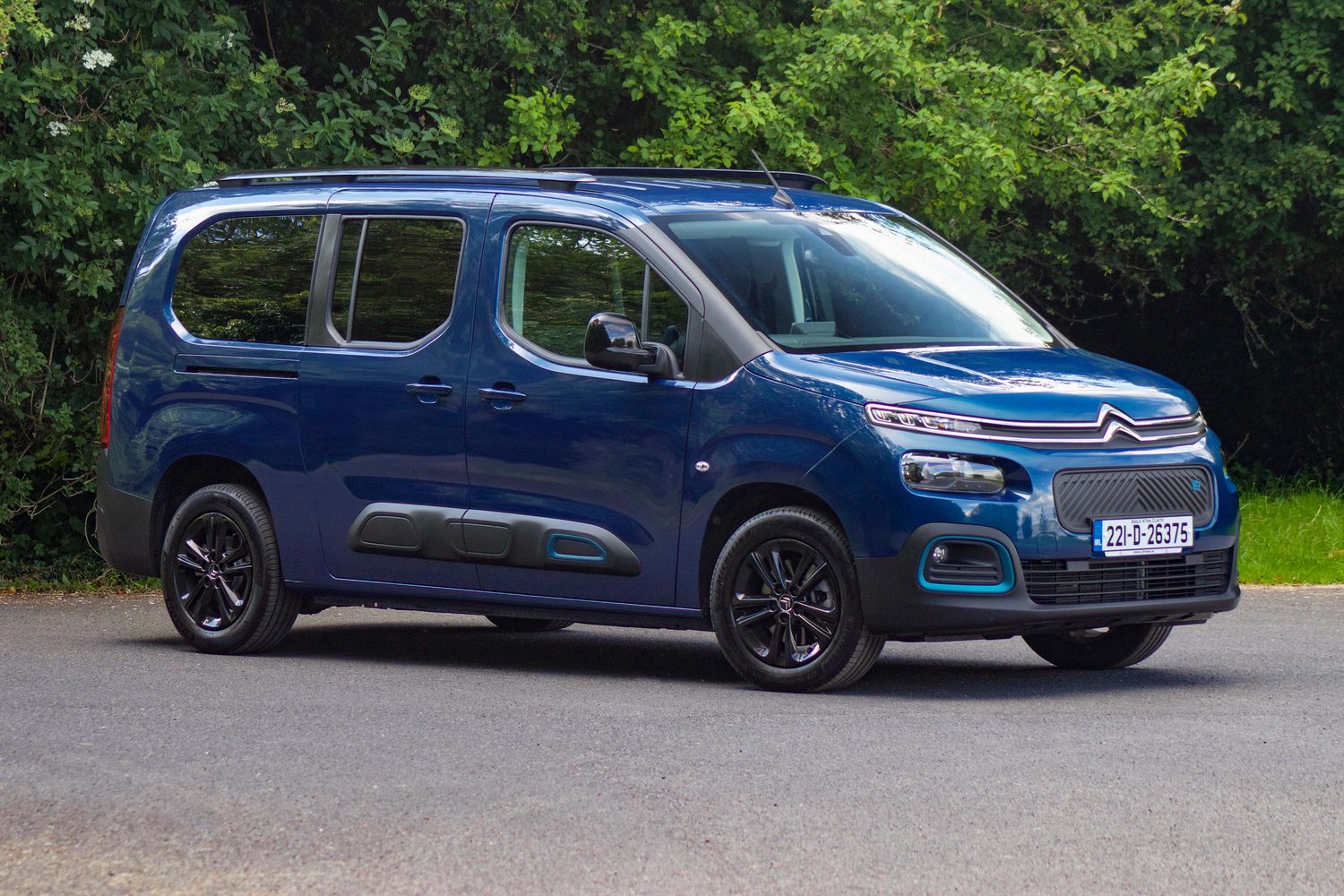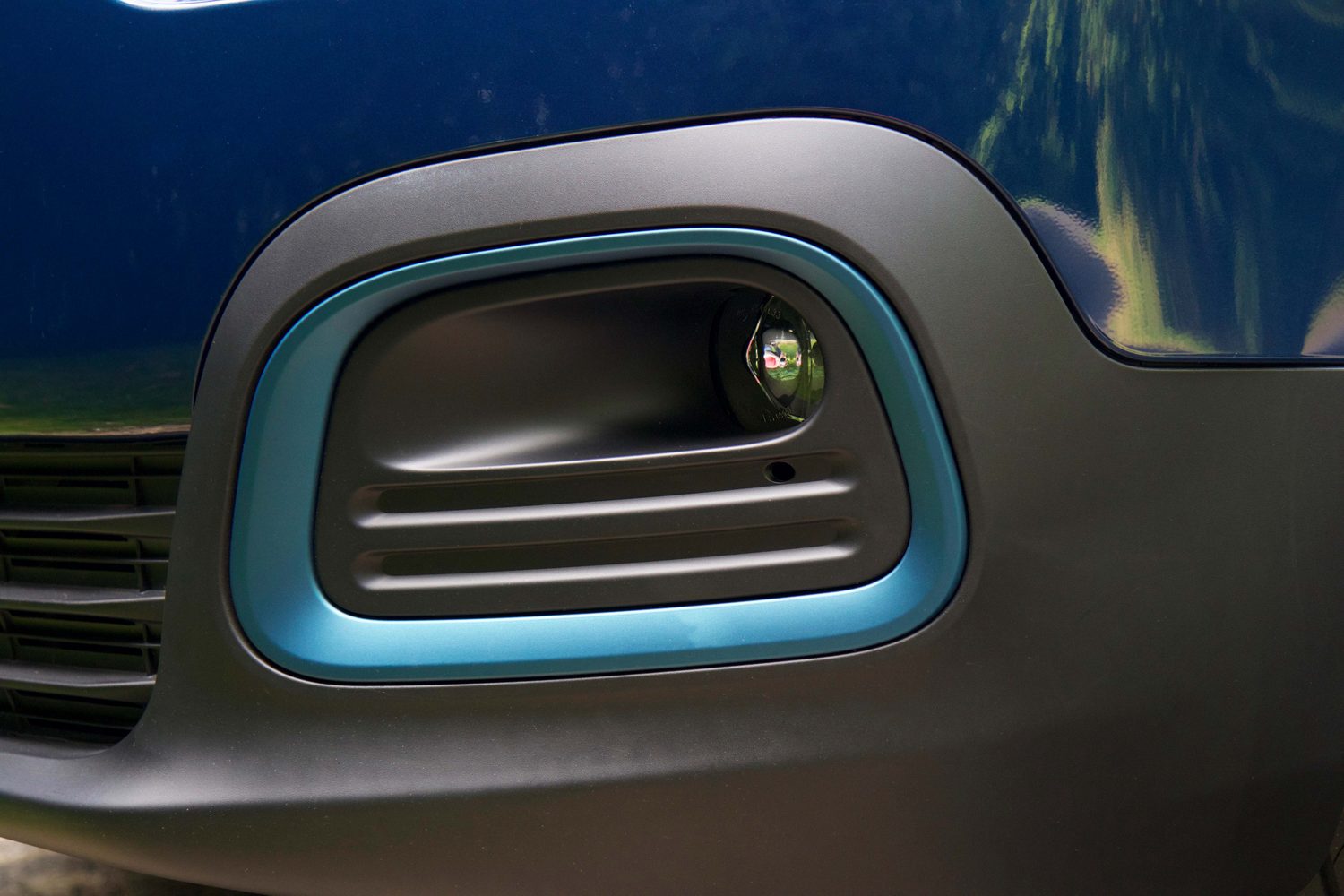Citroen e-Berlingo overview
People carriers are a dying breed in Ireland, so van-based models such as the Citroen Berlingo are having to cater for the needs of buyers looking for a car to carry lots of people or luggage. However, choosing a van-based model isn't the hardship that it once was, especially when it comes to the Berlingo.
The model's name is actually Citroen e-Berlingo, because it's only sold as an all-electric model - the petrol and diesel versions were dropped at the start of 2022 to help Citroen meet overall EU fleet emissions targets. The e-Berlingo uses the same running gear as the Citroen e-C4, Peugeot e-2008, Opel Corsa-e and a number of other Stellantis group EVs, while the platform shares tech with Citroen's other passenger cars, too.
The e-Berlingo is the smaller of two van-based electric MPVs that Citroen sells, and it shares its bodyshell with the Berlingo van. Like the commercial version, there are two body lengths available, while the longer version is available with seven seats as a €1,000 option.
Here we're testing the long-bodied e-Berlingo in five-seat guise, a model that's likely to be popular with large families and taxis, thanks to its cavernous boot even when all seats are occupied.
The Citroen e-Berlingo model range
Irish pricing for the Citroen e-Berlingo starts at €35,394 in standard guise, or €36,706 for the Long version. If you want seven seats, then that's a €1,000 option that you can add to the Long model. The only other option is metallic paint, which costs €595.
Apart from those additions, choosing an e-Berlingo is straightforward, because there's just one powertrain option and a single trim on offer. As with all Stellantis EVs, it comes with a 136hp electric motor that drives the front wheels, while a 50kWh battery pack (with 45kWh usable capacity) gives the e-Berlingo a WLTP-certified range of 280km, although that will vary according to how you drive and the ambient temperature outside. You'll easily get more than 200km from a full charge in most situations, though.
To get that battery to full capacity, Citroen has fitted the e-Berlingo with an on-board system that can accept up to 100kW on rapid DC chargers, which means a recharge from 15-80 per cent can take as little as half an hour. A charge from a dedicated EV wallbox takes 7.5 hours from a 7.4kW source, or five hours from an 11kW one.
The sole trim on offer with the e-Berlingo is called Feel Pack, and it gives this van-based MPV a bit of a stylish exterior update to hide its humble roots. There are gloss black alloy wheels, metallic blue detailing on the grille and black roof rails, while the plastic cladding helps to break up the car's vast bodywork. Other kit includes separately opening tailgate glass - useful in tight spots where you can't fully open the massive rear hatch - electric windows all round, rear parking sensors and camera, air conditioning, an electric parking brake, cruise control with limiter and speed limit detection, auto emergency braking with pedestrian detection, an eight-inch touchscreen with Apple CarPlay and Android Auto, Bluetooth and a USB connection, rear tray tables on the backs of the front seats, individually folding rear seats and a multifunction steering wheel.
You can currently get behind the wheel of an e-Berlingo for €325 a month with 1.9 per cent APR finance, a five-year warranty and three years of roadside assistance, but go to the Citroen Ireland website for the latest offers.
The Citroen e-Berlingo interior
Since the e-Berlingo is van-based, it won't come as much of a surprise to find that there are lots of hard plastics in the cabin. Still, that means it's hard-wearing, while the amount of storage space inside is impressive. There are overhead shelves, deep door bins and plenty of trays dotted around the dashboard, although there is a lack of covered storage, with only the glovebox offering somewhere to hide valuables.
Vans are designed to maximise cargo space within their footprint, so while the e-Berlingo isn't the prettiest machine, its vertical sides and high roof mean it's spacious inside. The Long version has a 2,975mm wheelbase, which is 190mm more than the standard e-Berlingo's, so there's a bit more passenger space in the back (not that the standard model feels cramped), while the extra 350mm of bodywork creates a simply cavernous cargo area, with 4,000 litres available in two-seat mode.
The rear seats fold flat into the floor, so you don't have to worry about lifting them out and finding somewhere to store them, and they fold individually, so you can change the layout to suit your needs. The seats themselves are all the same width, and they all have ISOFIX mounts, which will be handy for large families.
Choose the seven-seat upgrade and, while the third row doesn't have ISOFIX, it does offer added versatility, plus there's a 250-litre boot with all three rows in place. Unlike the middle row, these seats can be removed.
Access to the rear of the e-Berlingo is great, with the sliding side doors helping with getting into and out of the back seats in tight spots. The separate opening rear hatch glass is another neat touch, because it's not easy to open the huge tailgate itself in tight spots. Whether carrying passengers or cargo, the e-Berlingo is an extremely useful machine, which will appeal to big families and taxi drivers.
The Citroen e-Berlingo driving experience
Big windows mean there's a clear view of your surroundings, and since rear parking sensors and a reversing camera are fitted as standard, it means that the e-Berlingo's length isn't anything to be concerned about.
On the road, the Citroen e-Berlingo is fairly good. It's smooth for the most part, while the electric drive system means it's reasonably refined. There are still thumps and knocks heard through the large body, but then that's something to be expected from a van-derived model.
The e-Berlingo uses a platform that features Stellantis' EMP2 underpinnings up front, and van derived rear suspension. This is designed to cope with heavy loads, so it can struggle at times with bad bumps, although the weight of the drive battery under the floor helps smooth things out more than you'll find in an older diesel-powered Berlingo.
Citroen fits the e-Berlingo with a drive mode selector that allows you to pick between Eco, Normal and Power settings. These boost performance and shorten range as you work your way through them, but since the e-Berlingo defaults to Normal every time it starts, this is the setting that is most often used. Eco mode is handy if you're coming up short on range, because it limits power and the air conditioning, while Power zaps energy from the battery very quickly with a snappy throttle response that's tricky to get used to.
There's also a 'B' mode, which boosts energy recovery to the battery. It feels like engine braking in an internal combustion model, but we found it's difficult to be smooth with it. In fact, there's no real feedback or feel through the brake pedal or steering.
In terms of energy use, the e-Berlingo returned 18kWh/100km during our time with us in a drive that incorporated bad traffic and quicker mountain routes, and it seems like the Citroen's range should be acceptable for a day's driving. It might be a different story in the winter, though.
Our verdict on the Citroen e-Berlingo
Aside from meeting the obvious demand for taxis, the Citroen e-Berlingo could be a shrewd family car purchase, with masses of room for everything. Even in the five-seat version, the ability to fit three car seats across the middle row will be a deal clincher for the parents of small kids. While this isn't a car for the image conscious, the fact that all of this is available with the low running costs of electric power and a reasonable purchase price is a bonus.

































